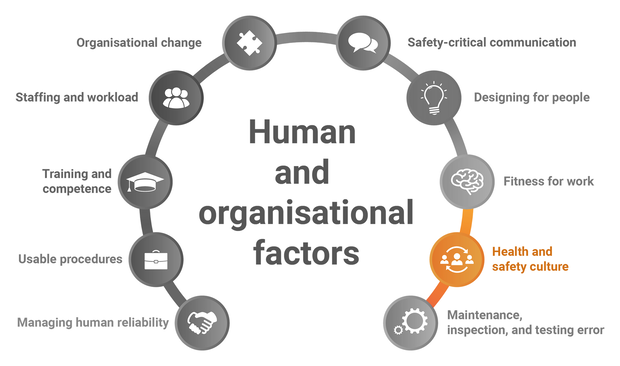
Health and safety culture – Leadership
Leaders have a strong influence on the health and safety culture of an organisation. However, leadership is not the same as management.
Managers and supervisors can no longer simply direct work and check compliance with rules and procedures. Instead, to become effective leaders, they need the skills to motivate employees, develop trust and increase participation.
They need to adopt attitudes, behaviours and styles of management that encourage their teams to be equally committed to health and safety.
Unfortunately, some managers and supervisors either underestimate the influence they have or know what makes a good leader, but find it difficult to translate this into action.
If managers are unsure about aspects of health and safety leadership, training can be considered. However, decisions about training should be made carefully as incorrect training may do more harm than good.
Who can be a leader?
Leaders can work at any level in the organisation and use the framework provided by the safety management systems to implement, monitor and review safety initiatives and activities.
All levels of organisational leadership should ensure that risks to health and safety are identified and treated with the same priority as business risks. They should seek advice and external support, where necessary, on all matters of health and safety that they are not entirely competent in themselves, and should continue to monitor, review, report and improve health and safety performance.
Events across a range of major hazard industries show that health and safety needs to be led from the very top of an organisation. In some organisations, good procedures and management structures appeared to be in place on paper but, on closer examination, those at a corporate level were found to be:
- uninterested in health and safety issues
- ill-equipped to deal with such issues
- of the belief that they had health and safety under control, but were focussed on the wrong things
- or in some other way failed to take a positive lead on safety.
Why is leadership commitment important to workplace health and safety?
Senior managers, middle managers and supervisors strongly influence health and safety in an organisation. Two key problems some managers have are that:
- they underestimate the influence they have
- they may know what makes a good leader, but find it difficult to translate this into action.
To effectively lead from the top, leaders need to show that they value health and safety in the workplace. Leadership commitment can be demonstrated through a concerted approach to implementing, monitoring and reviewing health and safety in the organisation.
- Provide adequate resources for health and safety.
- Seek advice from competent experts.
- Conduct risk assessments.
- Involve employees or their representatives in health and safety decisions.
- Manage changes that could affect health and safety.
- Ensure leadership presence is visible, genuine and sets a good example.
- Set health and safety standards for procurement of goods and services.
- Ensure that any changes required by law or as a result of events outside the organisation are made.
- Assess supplier standards.
- Chair a risk management or health and safety committee to set priorities for health and safety.
- Provide health and safety training to all work groups, management and senior leaders.
- Promote workforce participation in health and safety.
- Create effective systems for routine reporting and for reporting exceptional issues such as incidents.
- Monitor incidents, accidents, sickness and absence rates.
- Monitor progress on initiatives to improve health and safety such as training and maintenance programs.
- Report impact of changes on safety as soon as possible.
- Benchmark performance against others in the same sector.
- Include health and safety in senior management appraisals.
- Monitor contractor health and safety performance.
- Consider involving the workforce in monitoring programs.
- Review health and safety at least annually and:
- determine whether the current policy is still valid
- determine whether the systems for reporting to management have been working effectively
- identify problem areas, especially those caused by management decisions
- take action to solve these problems and then monitor those actions.
- Include health and safety in annual reports to investors.
- Take credit for and publicise good health and safety performance.

